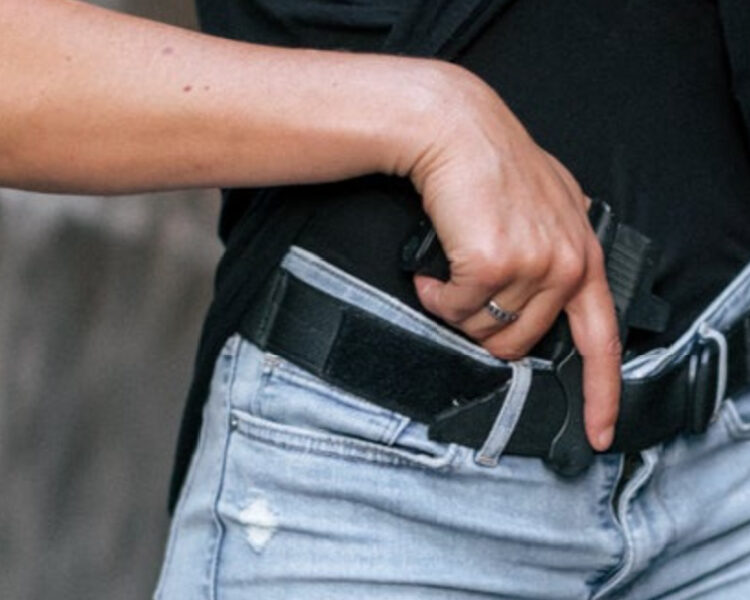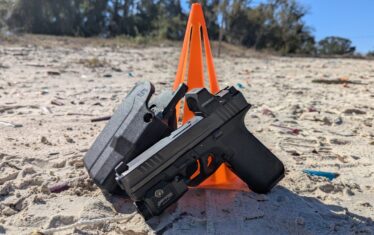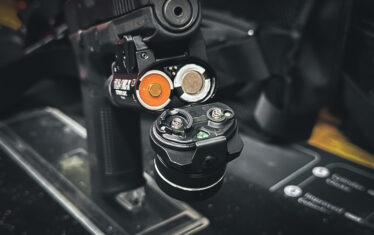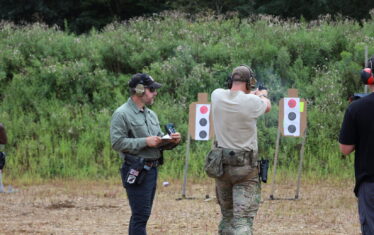The decision to carry concealed is personal, and choosing the right firearm is just as individual.
There’s a lot to think through, and one of the biggest factors is the size of your concealed carry gun. Things like caliber, weight, and how you plan to carry all play a role, but size often makes or breaks a carry setup.
SIZE CONSIDERATIONS
The size of your firearm needs to work with your body, not against it. Whether you go with a micro-compact, compact, or full-sized pistol, your ability to conceal it effectively is the top priority. Even the most powerful caliber won’t matter if you can’t keep your firearm concealed.
The smallest pistol size grouping for concealed carry, aside from a derringer, is the micro-compact size. Here’s a quick breakdown of pistol sizes:
- Micro-Compacts: Smallest in size, with shorter barrels and fewer rounds. Examples include the Sig Sauer P365 or Springfield Hellcat.
- Compacts: Slightly larger, offering more grip space and round capacity, like the Glock 19.
- Full-Sized Pistols: These have the longest barrels and highest capacities, such as a traditional 1911.
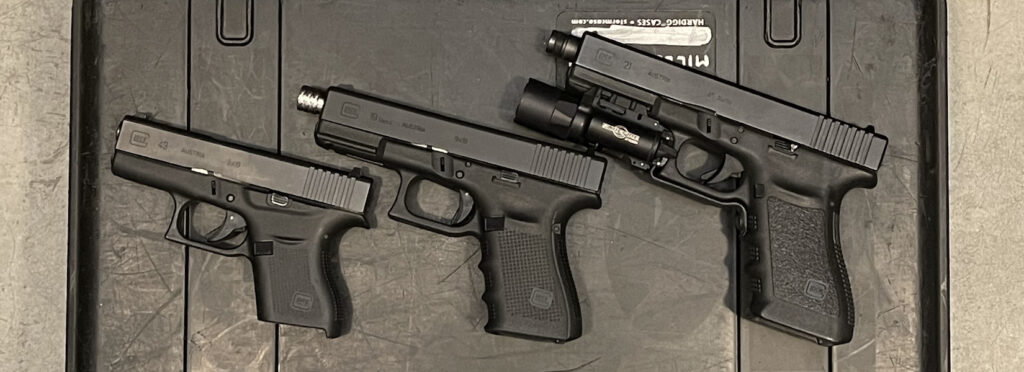
Body Shape
Body shape plays a significant role in determining what size firearm will work best for concealed carry. Women, for instance, often face different challenges due to smaller waists and fuller hips, making a full-sized pistol harder to conceal. Men with broader, square-shaped torsos might find it easier to carry larger firearms.
The key is to assess your own body and carry method. Your unique build and preferences will guide you toward the right size and style of firearm for comfortable and effective concealed carry.
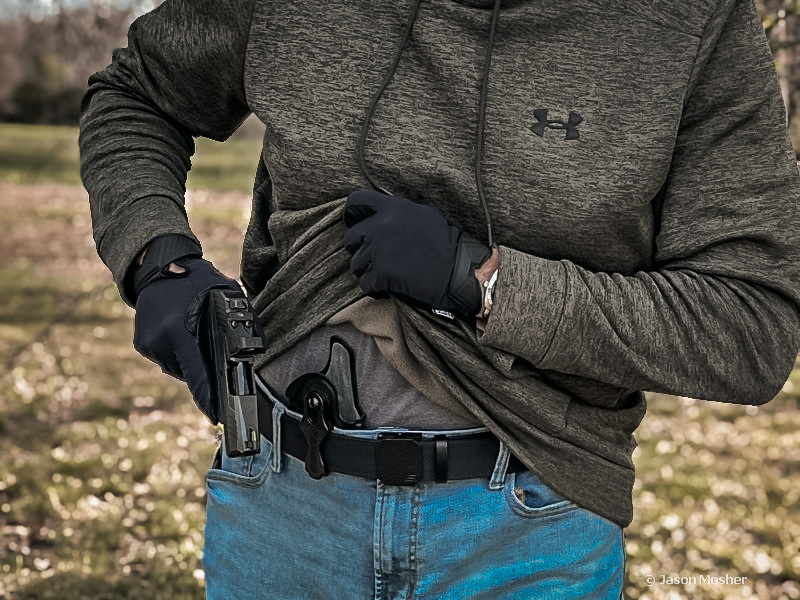
Choosing Your Concealed Carry Setup
When deciding on a concealed carry firearm, your body shape plays a huge role in what will work best. Think about how much space you have from one hip to the other whether there is a hollow or depression between your hips and your belly button.
Or, is your torso relatively straight? These factors determine how easily you can conceal different firearm sizes.
If the distance between your hips is narrow, you might be limited to carrying compact or micro-compact pistols. On the other hand, if you’re flatter across the middle, you might have an easier time concealing a full-size pistol.
Knowing your body’s overall shape and its limitations and overall shape will help you to determine how big or how small your carry weapon should be.
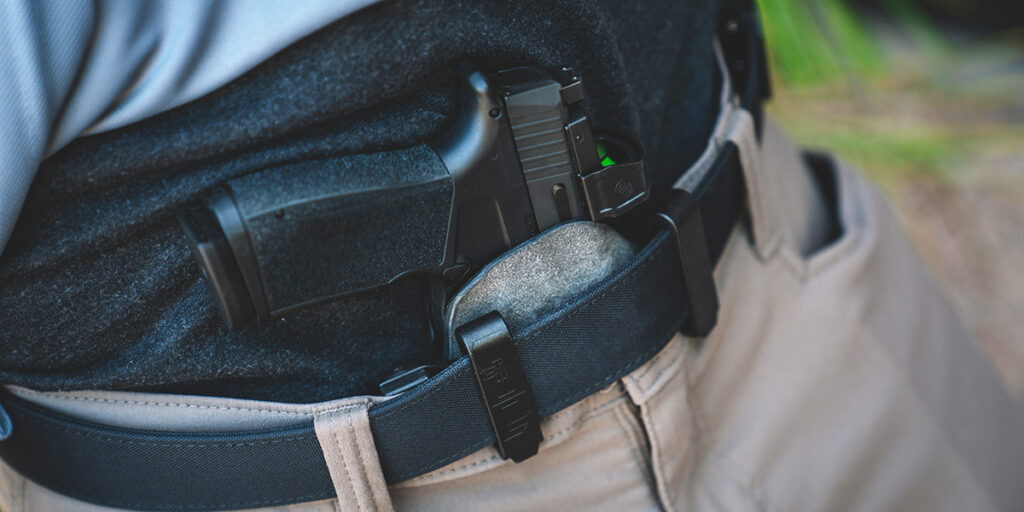
Placement Matters
Your preferred carry position also influences firearm size. Appendix carry, hip carry, or alternative carry — all come with their own challenges and benefits. Each position works better with certain firearm sizes depending on how the gun fits your body in that spot.
Comfort and Control
Concealing the firearm is one thing, but how it fits in your hand is just as critical. A micro-compact might hide easily, but if it feels too small in your hands or you can’t get all five of your fingers on the grip, you’ll sacrifice control.
That’s the problem I encounter. I’m a taller woman, but am curvy, so I’m able to conceal a micro-compact pistol pretty easily on my body. If I don’t use extended magazines, the pistol is too small for me to get a solid grip on it. That’s why I generally gravitate towards the compact-sized options.
Weight Considerations
Don’t forget the weight factor. A full-size pistol might be great for shooting, but carrying it all day can take a toll. Talk to any law enforcement officer and they’ll tell you the weight matters after a full day of carry. I realize they have many other items on their belts besides just the weapon and any extra magazines, but every ounce adds up, and trust me, they add up fast.
So, while your body might be able to successfully conceal a full-size gun, you need to ask yourself if your body can handle the full-size weight. Personally, I have back problems from time to time, so I opt for the lighter option to help negate the extra wear and tear on my body.
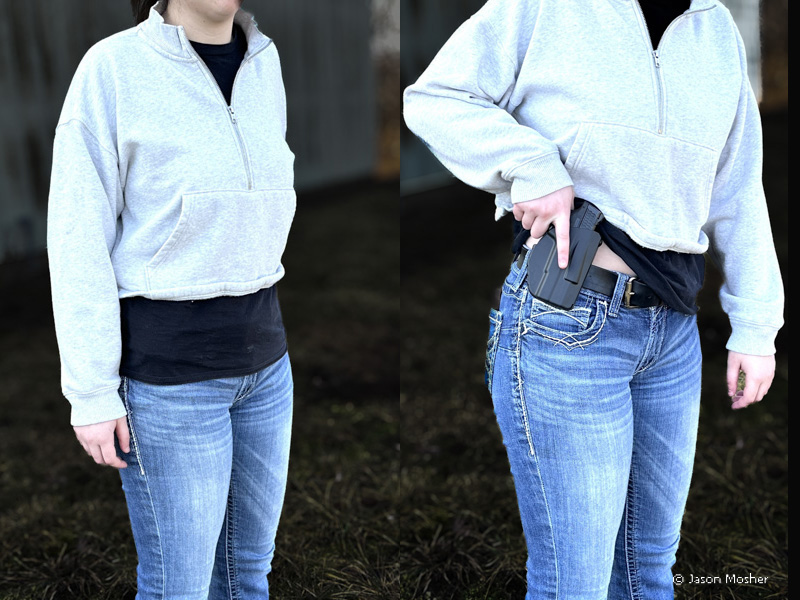
CALIBER CONSIDERATIONS
Choosing the right caliber for your concealed carry firearm is just as important as picking the gun itself. Different calibers offer varying levels of stopping power, recoil, and overall effectiveness. Let’s break it down in simple terms.
Lightweight Options
.22LR: On the lightest side of concealed carry calibers is the .22LR with its light hitting power and shorter available distance. A .22LR caliber concealed carry gun might be the best option for some people (think very petite individuals or those with mobility issues) offering less recoil, little muzzle rise, and a lighter weight.
There are drawbacks with the caliber such as low stopping power, but I’ve seen documentation on .22LR tumbling inside the body and doing some serious damage, so it shouldn’t be entirely discounted.
.380 ACP: A step up from the .22LR, the .380 has a little more snap in the recoil, but the pistol frames are still in the micro-compact range, making them good options for small people. The round has a little bit more punch to it compared to the .22LR but less than the bigger 9mm caliber.
Midweight
9mm: This is one of the best all-around calibers for concealed carry. It strikes a balance between manageable recoil and solid stopping power, making it a popular choice for both civilians and law enforcement.
With options ranging from micro-compact pistols to full-sized models, there’s a 9mm for nearly everyone. Plus, the variety of ammunition types, including +P loads for extra performance, gives it added versatility.
Heavier Option
.45 ACP: Another decent caliber option for concealed carry is .45 ACP. Heavier and harder hitting, this caliber offers the most bang for your buck, literally. Of all the calibers I’ve mentioned, this round is the snappiest in felt recoil and muzzle rise.
Pistols chambered in .45 ACP tend to be larger and heavier, which can make concealment more challenging. That said, they usually offer a full grip and higher magazine capacities, which some shooters find worthwhile.

OTHER CONSIDERATIONS for Concealed Carry
Once you’ve narrowed down your choice of firearm based on your body size and the gun’s dimensions, the next step is to think about holster compatibility and carry method. These two factors go hand in hand in your decision-making.
Holster and Carry Method
There are two main ways to carry concealed: inside-the-waistband (IWB) and outside-the-waistband (OWB). However, not all firearms have the same availability of holster options, so your desired carry method might limit your choices.
Thankfully, in a market that has just about any holster option for almost any pistol on the market, there are many compatible holsters out there to choose from.
From minimalist designs like the Schema for IWB carry to more robust options like the Incog X, there’s something for everyone. For OWB carry, paddle holsters provide a quick attachment option that’s popular for many users.
Holsters come in a wide range of materials, at most any price point, with adjustments available like cant, and with or without an optic/light mounted. Some folks prefer the feel of leather while others prefer the repeatability of a polymer blend. Whether you prioritize comfort, concealment, or accessibility, there’s likely a holster to meet your needs.
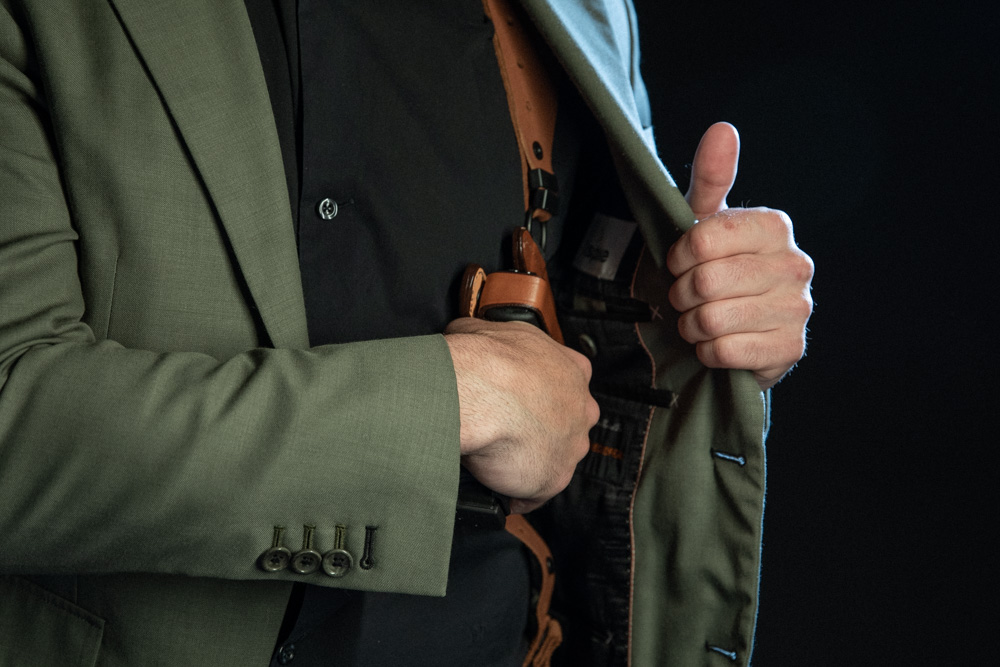
WRAP-UP
There’s no universal answer when it comes to concealed carry. Your choice of firearm and setup depends entirely on personal factors like your body size, firearm preferences, and intended carry method. The key is to assess what works best for you—test different pistols, calibers, and holster setups until you find the right combination.
At the end of the day, concealed carry isn’t just about finding a gun that “gets the job done.” It’s about finding one that fits you, your lifestyle, and your needs so you can carry confidently and effectively.





